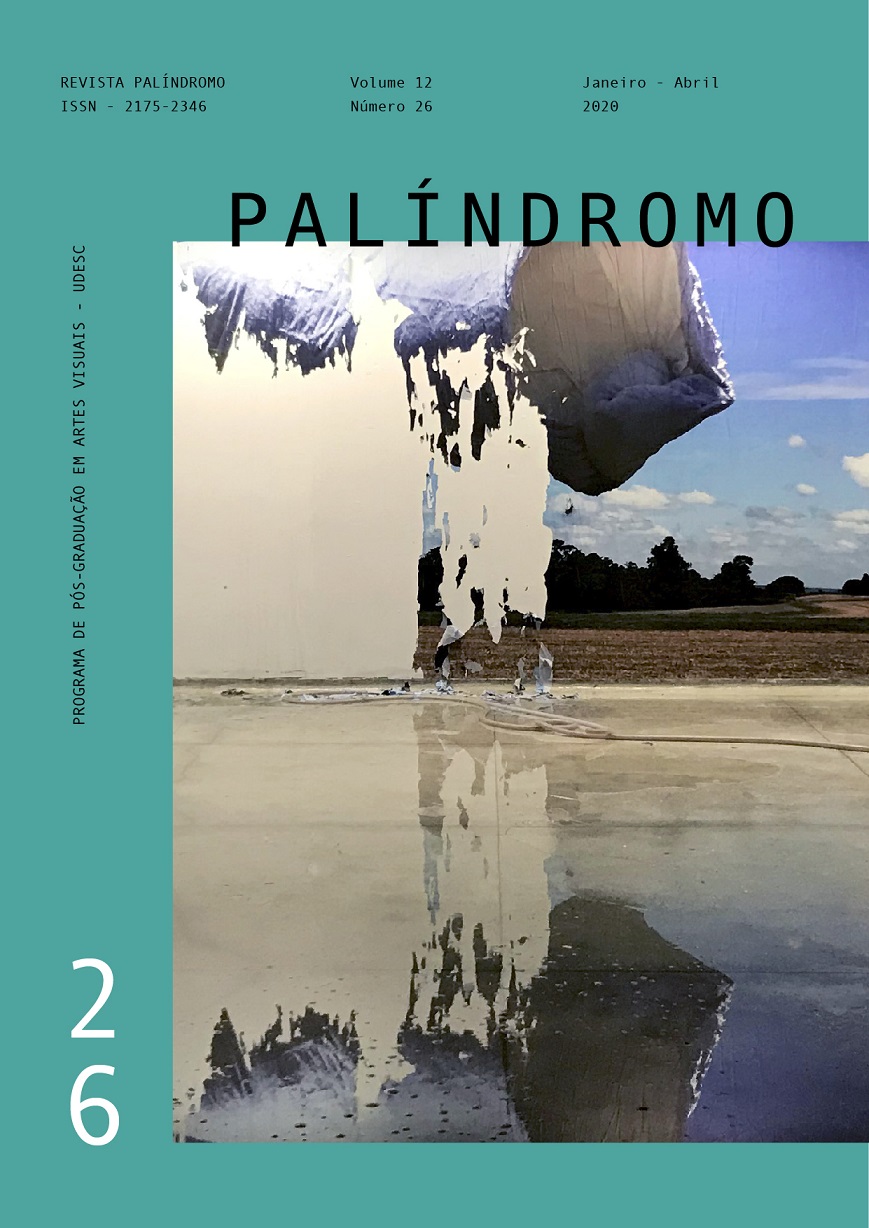Voz alta: polyphonies of saying
DOI:
https://doi.org/10.5965/2175234612262020125Keywords:
Rafael Lozano-Hemmer, polyphony, listening, participationAbstract
Considering participation and social experience fundamental elements for the realization of many contemporary art works, this article brings out the voice, or the element of speech, discourse and story, as points of updating the artist-work-public tension, through the analysis of the work VOZ ALTA (2008) by the artist Rafael Lozano-Hemmer. It is the speech and listening, and their respective processes of language translation, that configure the polyphonies of this sonorous work in the face of the Latin American problematics of the limits - and also, of the powers - of saying today.Downloads
References
ÁNGEL, M. A. La región más transparente: Una ciudad hecha de voces en el tiempo. México: Revista Casa Del Tiempo, Universidad Autónoma Metropolitana, 2016, p. 25 – 33.
BACHELARD, G. A poética do espaço. Rio de Janeiro: Editora Eldorado, 1998.
BASSO, E. R; MERINO, A. X. Polifonía no romance La región más transparente (2008) de Carlos Fuentes. Rio Grande do Norte: Revista Colineares, 2015, p. 95 – 120.
CANCLINI, N. G. A Sociedade Sem Relato. Antropologia e Estética da Iminência. São Paulo: Editora EDUSP, 2012.
DELEUZE, G. GUATTARI, F. Mil Platôs. Vol 4. São Paulo: Editora 34, 2012.
FOSTER, H. O retorno do real. São Paulo: Ubu Editora, 2017.
FUENTES, C. La región más transparente. México: Fondo de Cultura Económica, 2008.
GUATTARI, F. ROLNIK, S. Micropolítica. Cartografias do desejo. Rio de Janeiro: Petrópolis, 1996.
LOZANO-HEMMER, Rafael. Voz Alta. Disponível em: <http://www.lozano-hemmer.com/voz_alta.php>
MARQUES, A. Política da imagem, subjetivação e cenas de dissenso. Londrina: Revista Discursos Fotográficos, 2014.
MERLEAU-PONTY, M. Signos. São Paulo: Martins Fontes, 1991.
MCLUHAN, M. Visão, Som e Fúria. Teoria da Cultura de Massa. 7º Ed. Rio de Janeiro: Paz e Terra, 2005.
NEVES, P. Mixagem. O ouvido musical do Brasil. São Paulo: Max Limonad Ltda, 1985.
ORIGEM DA PALAVRA. Disponível em: < https://origemdapalavra.com.br/artigo/dizer/ >
PAZ, O; ADAME, A. G. Octavio Paz En 1968 El Año Axial. Cartas Y Escritos Sobre Los Movimientos Estudiantiles. Ciudad de México: Taurus, 2018.
PONIATOWSKA, E. La Noche de Tlatelolco. Ciudad de México: Ediciones Era, 1971.
RANCIÈRE, J. A partilha do sensível: estética e política. Rio de Janeiro: Editora 34, 2005.
SCHAFER, R. M. A afinação do mundo. São Paulo: Editora Unesp, 2011.
Downloads
Published
How to Cite
Issue
Section
License
Copyright (c) 2020 Palíndromo

This work is licensed under a Creative Commons Attribution 4.0 International License.
COPYRIGHT STATEMENT
The articles published by the magazine are free to use, intended for academic and non-commercial applications. Copyright is all assigned to the magazine. The articles whose authors are identified represent the expression from the point of view of their authors and not the official position of Palíndromo Magazine. The author (s) commits to whenever they publish material referring to the article published in Palíndromo mention this publication as follows:
This article was originally published by Palíndromo magazine in its volume (place the volume), number (place the number) in the year of (place the year) and can be accessed at: http://www.revistas.udesc.br/index.php/palindromo


